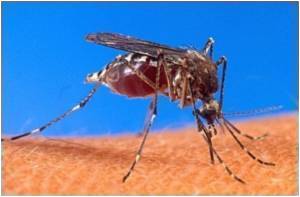
The Isle d'Oleron is a small island halfway up France's Atlantic coastline reachable by one of the country's longest road bridges.
In summer it's one of the most popular tourist destinations around but the battle to reduce mosquito numbers -- and their nuisance factor -- starts well before the holiday season really kicks into high gear.
The insects "often attack at cocktail hour," admits Jean-Paul Guyot with a wry smile.
Guyot knows these things. He's head of Oleron's anti-mosquito unit, where a handful of workers, in waders and carrying sprays on their back, at busy in a salt marsh.
The man-made salt marshes, whose water level changes depending on the tide, is where the eggs are hatched and grow before finally emerging as the kind of adult mosquitoes that can zero in on your sweat at 100 paces.
Advertisement
The female can fly dozens of kilometres (miles) trying to locate a suitable host skin to prick and from which to suck out the blood it needs to digest so it can develop eggs.
Advertisement
The publicly-funded outfit, EID Atlantique, takes in five departments which stretch from Brittany in the northwest to Bordeaux down south whose economies rely heavily on tourism.
The Man vs Mosquito battlegrounds include the likes of the Gulf of Morbihan, the Arcachon basin, the salt marshes of Guerande and the bay of Aiguillon.
EID's 55 mosquito-bashers monitor thousands of hectares of marsh and start spraying as soon as the larvae appear on the surface. The eggs hatch when the water level rises after high tides or heavy rain.
These areas are environmentally sensitive so the treatment is carried out using natural biocides, EID's environment director Laurence Thibaud said.
Eliminating the mosquitoes before they can fully develop can be achieved on foot using the spray machines.
In some areas though, such as the Gironde estuary, the mosquito-bashers may need quad bikes or even helicopters, "the only way," said Thibaud, "to be able to intervene at the right speed over areas of several thousand hectares."
Thibaud hails these mosquito experts as "guardians of the salt marshes." In many cases they're the last people assuring some sort of human oversight over areas that have long lain abandoned by farmers.
"They provide a health overview of the species, which could bring disease. They're also there to alert us if exotic species arrive, or about any climatic changes."
Still, given their adult shelf-life of four to eight weeks, the mosquito is unlikely to be around long enough to interrupt too many campsite cocktails.
Source-AFP









